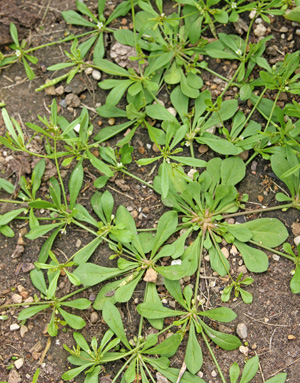
Carpetweed is a distinctive weed that, as its name suggests, spreads rapidly on the ground to form a prostrate mat. Mollugo verticillata is in the carpetweed family (Molluginaceae, previously included in the larger family Aizoaceae), a group of tropical and subtropical herbaceous plants and dwarf shrubs with fleshy or succulents leaves primarily in southern Africa. The origin of this species is debated, possibly being native to tropical America. Regardless, it now is naturalized throughout much of North America, including all counties in Wisconsin. Also called green carpetweed, Indian chickweed, whorled chickweed, and devil’s grip, it is commonly found in sunny, disturbed areas so is frequently found in tilled gardens, newly planted lawns, along roadsides or railways. It is typically found in dry sites and sandy soil but also thrives in moist soils. It does not compete well with taller plants that shade it out.
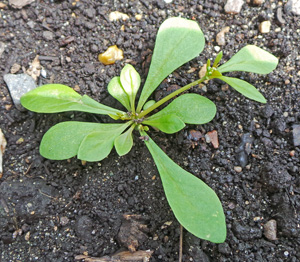
This summer annual germinates late in the spring, after the soil has warmed and grows quickly to form a circular mat up to 2 feet across spreading in all directions from a sparsely branched central taproot. The plant remains close to the ground, forming a mat that rarely exceeds 5 inches in height.
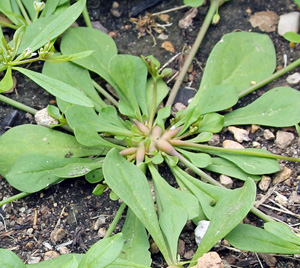
The smooth green stems branch at nodes where the leaves are also formed, often with a pinkish swelling at the base where it joins with the axis. There are relatively long internodes between the nodes.
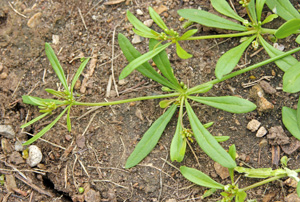
The sessile, long and narrow leaves occur in flat whorls of three to eight at each node. Each dull green leaf is smooth and hairless, with entire margins, and up to 1½ inch long and ¼ inch wide. Leaf shape is rather variable and can be anything from linear to elliptic to obovate to oblanceolate to broadly spatulate and rounded or pointed at the tip. The foliage is supposedly edible when cooked.
Plants begin blooming in mid-summer and continue flowering through early fall, for about two months. The small, star-shaped flowers are produced in axillary clusters of 2 to 5 flowers on long stalks in the axils of the leaves. Each ⅛ to ¼ inch wide flower has 5 sepals that look like petals (but true petals are either very small or absent). The sepals are green on the underside and white to greenish-white on the upper surface, often with vertical pale green lines. There is a central green ovary with a tripartite style and 3 to 5 white stamens surrounding the ovary. The flowers may be visited by small flies, bees and other insects.

Flowers are followed by tiny, egg-shaped, thin-walled, three-valved fruit capsules that contain up to 35 tiny seeds. The dry fruit splits open when ripe. The orange-red to reddish-brown, kidney-bean-shaped (reniform) seeds are glossy and generally with 5 to 8 parallel, curved dark brown ridges along the sides. The plants readily reseed, often forming colonies. Birds and small mammals will eat the seeds. It reproduces only by seed.
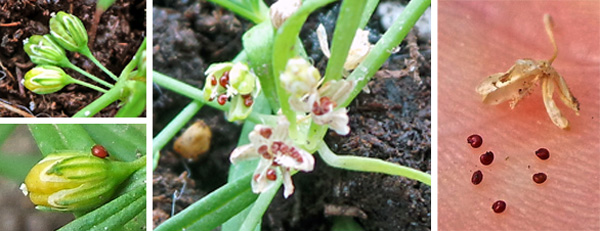
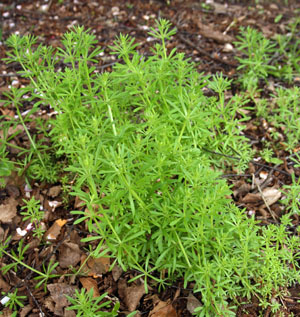
The only other plants carpetweed might be confused with are the bedstraws (Galium spp., such as the introduced sweet woodruff, G. odorata, or the native catchweed bedstraw, G. aparine), sprawling plants with whorled leaves and white flowers. But those species have 4 parts to the flower instead of 5, often have hairy rather than smooth leaves, and generally are not as flat to the ground.
This weed is easily removed manually – hand pulling or hoeing – in ornamental or vegetable gardens or in small areas of turf. Try to remove plants before they begin flowering to prevent seeds from setting.
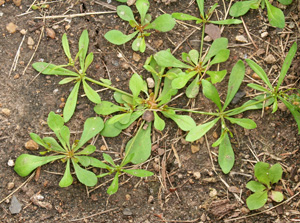
Mulching will greatly reduce or prevent its growth in gardens and proper turf maintenance (appropriate mowing, fertilization and watering) will encourage a vigorous lawn that will outcompete this species. Both pre-emergence and post-emergence herbicides can be used if mechanical removal is not an option.
Although gardeners may not like it, this plant is of interest to plant biochemists because it possesses unusual photosynthetic pathway characteristics intermediate between the two forms of photosynthesis (referred to as C3 and C4).
– Susan Mahr, University of Wisconsin – Madison
Latest from Wisconsin Yard & Garden
Ask Your Gardening Question
If you’re unable to find the information you need, please submit your gardening question here:





 ▶ Watch: Biology and Management of Canada Thistle, Bishop's Goutweed, and Creeping Bellflower
▶ Watch: Biology and Management of Canada Thistle, Bishop's Goutweed, and Creeping Bellflower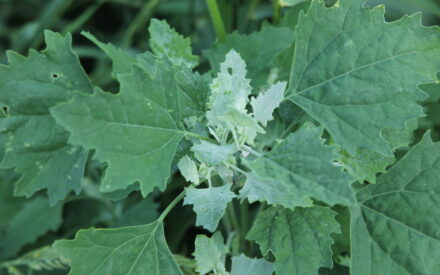 Common Weed Seedlings of the North Central States
Common Weed Seedlings of the North Central States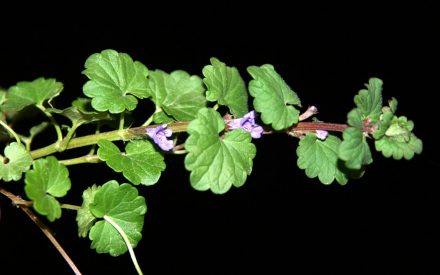 Creeping Charlie, Gleochoma hederaceae
Creeping Charlie, Gleochoma hederaceae Common Purslane, Portulaca oleracea
Common Purslane, Portulaca oleracea


